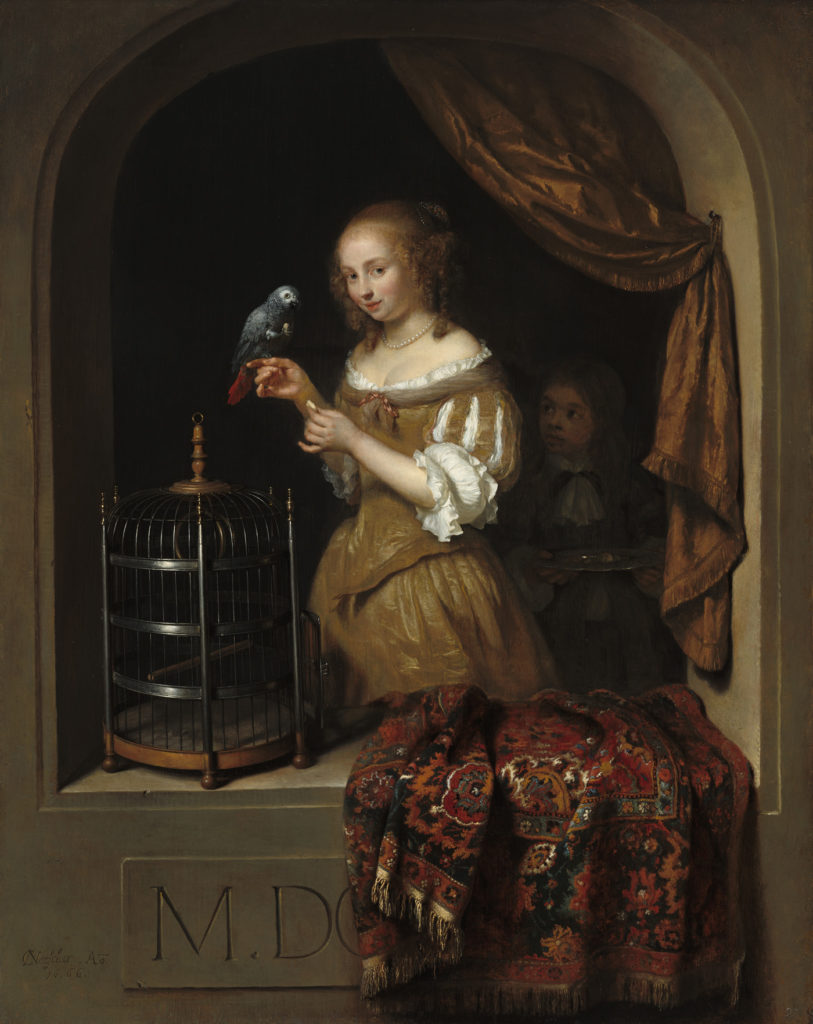Opinion
Caspar Netscher: Obscurity As a Selling Point
THE DAILY PIC: Netscher, from 17th-century Holland, is the latest Great Unknown championed by our National Gallery.

THE DAILY PIC: Netscher, from 17th-century Holland, is the latest Great Unknown championed by our National Gallery.

Blake Gopnik

THE DAILY PIC (#1651): In an age when museums are more and more about blockbusters, big names and pandering to the public’s received ideas about art, it’s a pleasure to receive a press release proudly proclaiming “National Gallery of Art Acquires Caspar Netscher’s Masterpiece ‘A Woman Feeding a Parrot, with a Page’ ” – as though the unknown name of Netscher was as much worth trumpeting as “van Gogh,” “Picasso” or “Warhol.”
I’m pleased to say that such releases aren’t that rare a thing when they’re coming from our National Gallery, and especially when they involve Dutch and Flemish art. For many decades now, curator Arthur Wheelock has been helping us explore fascinating new corners of his bailiwick, and his bosses have backed him all the way in doing it. The gallery’s new Netscher, for instance, just went on a display in a classically Wheelockian show called “Drawings for Paintings in the Age of Rembrandt,” guaranteed to be every bit as fascinating as it is recondite. (The trick to Wheelock’s excellence is that, for him, the recondite is just fascinating stuff that hasn’t had the attention it deserves.)
A couple of quick thoughts on the Netscher itself.
First, we read this painting as giving us wonderful access to the comforts of an utterly Dutch bourgeois reality. But for all its Dutchness, the painting also provides clues, in its oriental carpet and African parrot, of the far-flung trading ties that funded Netscher’s world.
Second, Netscher is working in a finely detailed style that’s a million miles from the expressive brushiness of Rembrandt, his era’s superstar artist. But I wonder if one reason Netscher put such a focus on the picture’s carpet is that its blocky patternings let him indulge in a bit of Rembrandtian visual texture without forsaking the spit-and-polish realism that he’s also committed to. (National Gallery of Art, Washington, The Lee and Juliet Folger Fund)
For a full survey of past Daily Pics visit blakegopnik.com/archive.